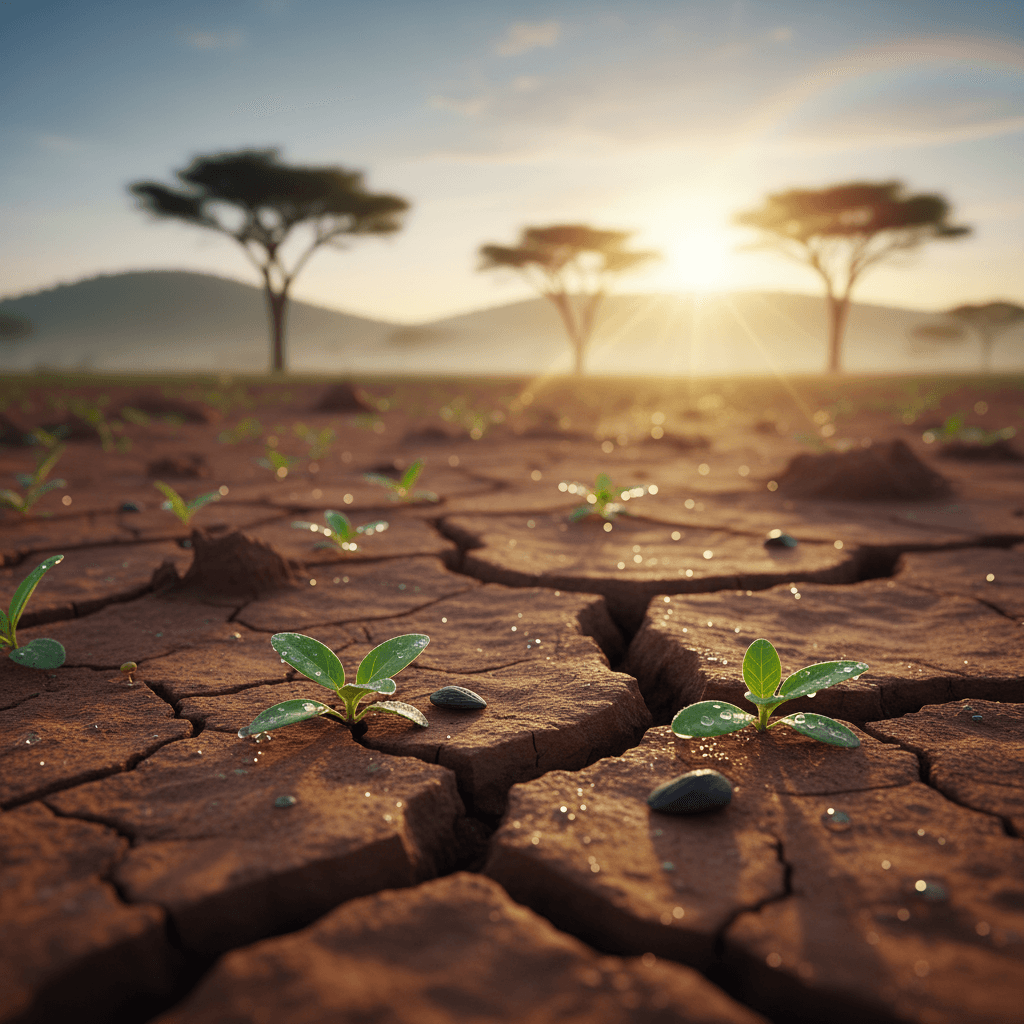Sowing Hope in the Cracks of Crisis

When the ground cracks, plant seeds — growth loves daring places. — Wangari Maathai
From Rupture to Germination
Maathai’s line reframes fracture as invitation. When the ground splits—literally in drought or figuratively in social upheaval—it creates new surfaces where seeds can lodge, light can reach, and water can seep. In this view, damage is not an ending but an aperture. Rather than waiting for perfect conditions, the proverb urges timely action: plant while the fissure is open. Thus, “daring places” become laboratories of renewal, precisely because they are unstable. With that lens in place, we can see how Maathai did more than speak metaphor; she lived it.
Maathai’s Practice on Fractured Ground
In 1977, Wangari Maathai founded the Green Belt Movement, mobilizing Kenyan women to plant trees on eroded slopes, denuded commons, and along threatened streams—landscapes many considered lost. As she recounts in Unbowed (2006), these plantings stitched ecological repair to civic dignity, creating income, shade, and soil while nurturing democratic voice. Even amid confrontation—such as the 1999 defense of Nairobi’s Karura Forest—she kept planting where pressure was greatest. Her Nobel Peace Prize Lecture (2004) linked trees to peace, arguing that restored ecosystems underwrite just societies. In short, she sowed into cracks—ecological and political—and growth answered.
Disturbance Ecology’s Lesson
Nature corroborates the proverb. After disturbance, pioneer species seize openings: fireweed carpets burn scars; lupines fixed nitrogen on Mount St. Helens’ ash (1980), preparing ground for forests to return. Cracks trap seeds, reduce wind scouring, and channel brief rains into root zones; roots then stabilize soil and invite microbes and mycorrhizae, accelerating succession. C. S. Holling’s resilience theory (1973) shows systems often renew through cycles of release and reorganization; the broken phase is not failure but a corridor for adaptation. Thus biology explains why growth “loves” daring places: the edge is resource-rich for beginnings.
Social Seeds in Civic Fissures
Societies follow a similar rhythm. John Kingdon’s Agendas, Alternatives, and Public Policies (1995) describes policy “windows” that open after shocks—a scandal, a drought, a protest—when ideas can take root. The U.S. Civil Rights Movement used televised brutality in Birmingham (1963) and Selma (1965) to propel landmark laws; the spectacle of rupture created space for moral clarity. Likewise, Maathai leveraged environmental flashpoints—illegal land grabs, urban forest clearances—to plant institutions alongside trees: community nurseries, legal challenges, and citizen networks. In each case, a crack became a seedbed because someone was ready with seeds.
Practices for Planting in Daring Places
Translating metaphor into method begins with fit: choose native, hardy species matched to the stress—drought-tolerant trees for dry gullies, deep-rooted grasses for slopes. Seed balls popularized by Masanobu Fukuoka’s natural farming (1978) protect seeds through heat and birds, while pocket “Miyawaki” micro-forests (Miyawaki 1999) rapidly rewild tiny urban plots. Pair quick wins—mulch, water harvesting, community cleanups—with long-horizon care: tenure, monitoring, and shared stewardship. Even guerrilla gardening benefits from consent and safety, turning one-off plantings into neighborhood nurseries. In this way, practical steps keep pace with the opening of opportunity.
Tending the Inner Soil of Courage
Because daring places are risky, inner cultivation matters. Research on post‑traumatic growth (Tedeschi and Calhoun, 1996) shows that meaning-making, supportive ties, and small acts of agency help people transform rupture into renewal. Likewise, movements endure when they pair bold first plantings with resilient practices: reflection circles, mentorship, and rest. As Maathai modeled, courage is not bluster but a habit of returning—again and again—to sow where others see only cracks. Ultimately, by meeting breaks with seeds, we turn crisis into the architecture of future shade.